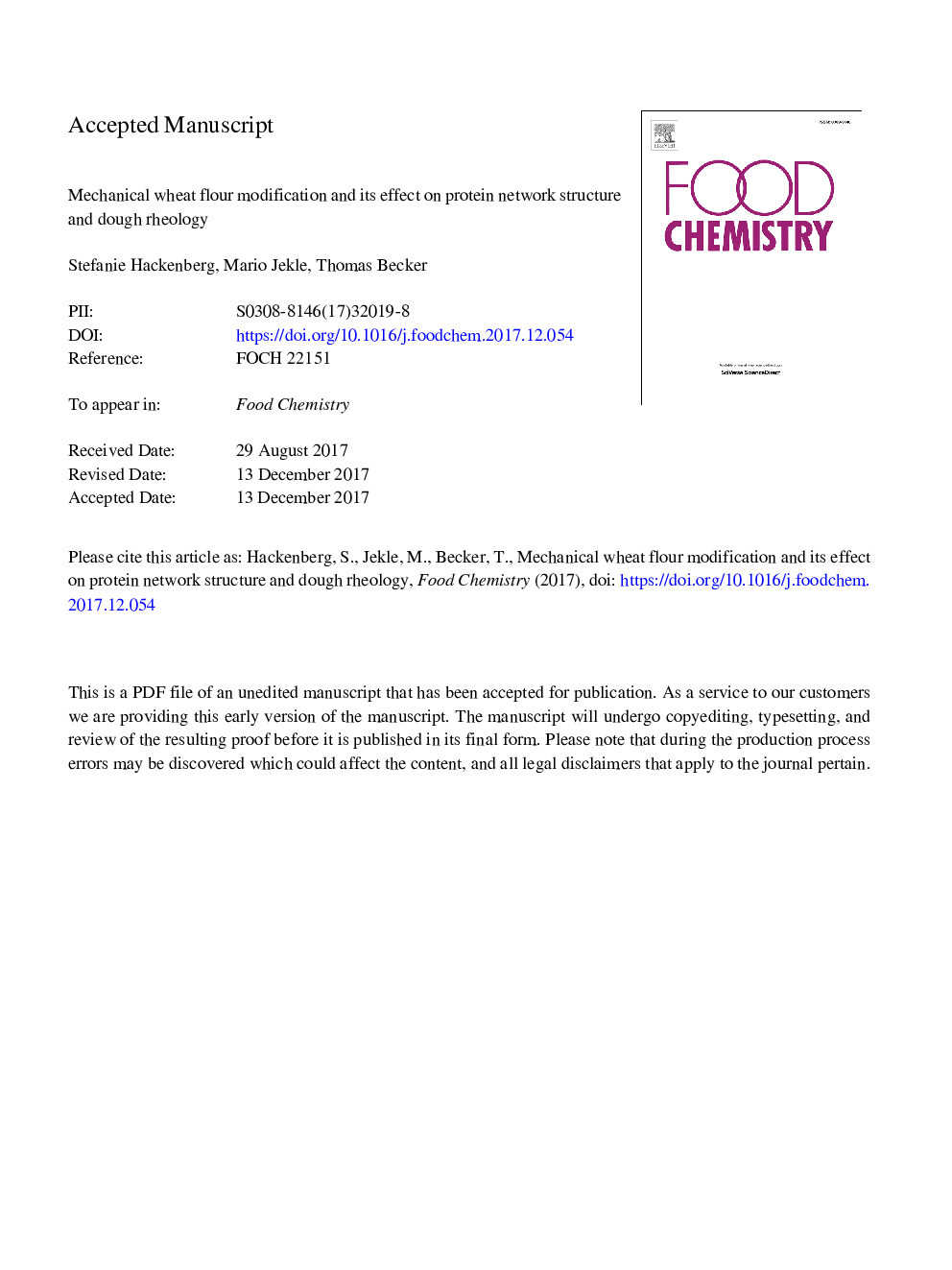| Article ID | Journal | Published Year | Pages | File Type |
|---|---|---|---|---|
| 7586078 | Food Chemistry | 2018 | 22 Pages |
Abstract
Mechanical flour modification is frequently associated with a reduced bread volume due to changed structural and functional properties of protein and starch. To clarify the effect of mechanical flour treatment on the protein network formation at the optimum kneading time (Peaktime), dough was produced with various mechanical starch modification (MSM) levels and visualized by confocal laser scanning microscope before being characterized by protein network analysis (PNA). Dough produced with high MSM showed a reduced branching rate (â14%), a high end-point rate (+25%) and an increased lacunarity (+139%), indicating a poor network connectivity with network interruptions. Alterations of the protein microstructure were closely related to the rheological dough properties. In this regard, reduced extensibility and resistance to extension of dough produced with high MSM levels were responsible for decreased dough height (Hm) during fermentation and thus might be the cause for lower baking volume of bread produced with high MSM.
Related Topics
Physical Sciences and Engineering
Chemistry
Analytical Chemistry
Authors
Stefanie Hackenberg, Mario Jekle, Thomas Becker,
